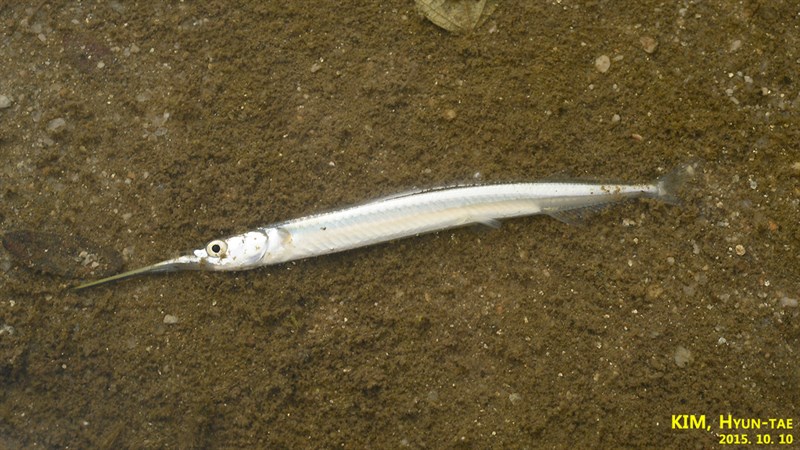Hyporhamphus intermedius is a species of fish belonging to the family Hemiramphidae, commonly known as halfbeaks. They are characterized by their elongated, flattened bodies and their distinctive beak-like lower jaws. This species is found in tropical and subtropical waters around the world, making it a common inhabitant of various marine ecosystems.
Description & Characteristics
Hyporhamphus intermedius can reach a maximum size of 20.3 cm. Its elongated, streamlined body allows for efficient swimming, and its beak-like lower jaw is an adaptation for feeding on small invertebrates. The dorsal fin is located towards the rear of the body, while the anal fin is positioned further forward. The coloration of Hyporhamphus intermedius can vary depending on its habitat, but it is generally silver or greenish-gray with darker stripes or spots.
Habitat and Occurrence
Hyporhamphus intermedius is a common inhabitant of coastal waters, typically inhabiting estuaries, bays, and lagoons. They are often found in areas with a high abundance of plankton and other small invertebrates. This species is primarily found in the epipelagic zone, which is the uppermost layer of the ocean that receives sunlight. The distribution of Hyporhamphus intermedius extends throughout the tropical and subtropical regions of the world, including areas such as the Atlantic, Pacific, and Indian Oceans.
Taxonomy
Hyporhamphus intermedius belongs to the Class: Teleostei, Order: Beloniformes, and Family: Hemiramphidae. Teleostei is a diverse group of fish that includes most bony fish species, while Beloniformes comprises a variety of elongated fish with long, beak-like jaws. The family Hemiramphidae, to which Hyporhamphus intermedius belongs, is characterized by having a halfbeak, meaning their lower jaw is longer than their upper jaw.
Feeding
Hyporhamphus intermedius is a carnivorous fish that primarily feeds on small invertebrates, including plankton, crustaceans, and insects. They are often observed swimming in schools, using their long lower jaws to sift through the water column and capture prey. Their beak-like mouth allows them to effectively feed on a variety of small organisms.

Image References